Antibodies Capable Of Binding Hla-a2/tyrd In An Hla Restricted Manner And Uses Thereof
Jakobovits; Aya ; et al.
U.S. patent application number 16/622892 was filed with the patent office on 2020-07-02 for antibodies capable of binding hla-a2/tyrd in an hla restricted manner and uses thereof. The applicant listed for this patent is ADICET BIO, INC.. Invention is credited to Dror Shmuel Alishekevitz, Ilan Beer, Galit Denkberg, Reut Erel Segal, Orit FOORD, Aya Jakobovits, Ravit Oren, Mira Peled Kamar, Yoram Reiter, Daulet Kadyl Satpayev, Yael Shperber (Sery), Keren Sinik, Yael Teboul (Elbaz).
| Application Number | 20200207858 16/622892 |
| Document ID | / |
| Family ID | 64658979 |
| Filed Date | 2020-07-02 |
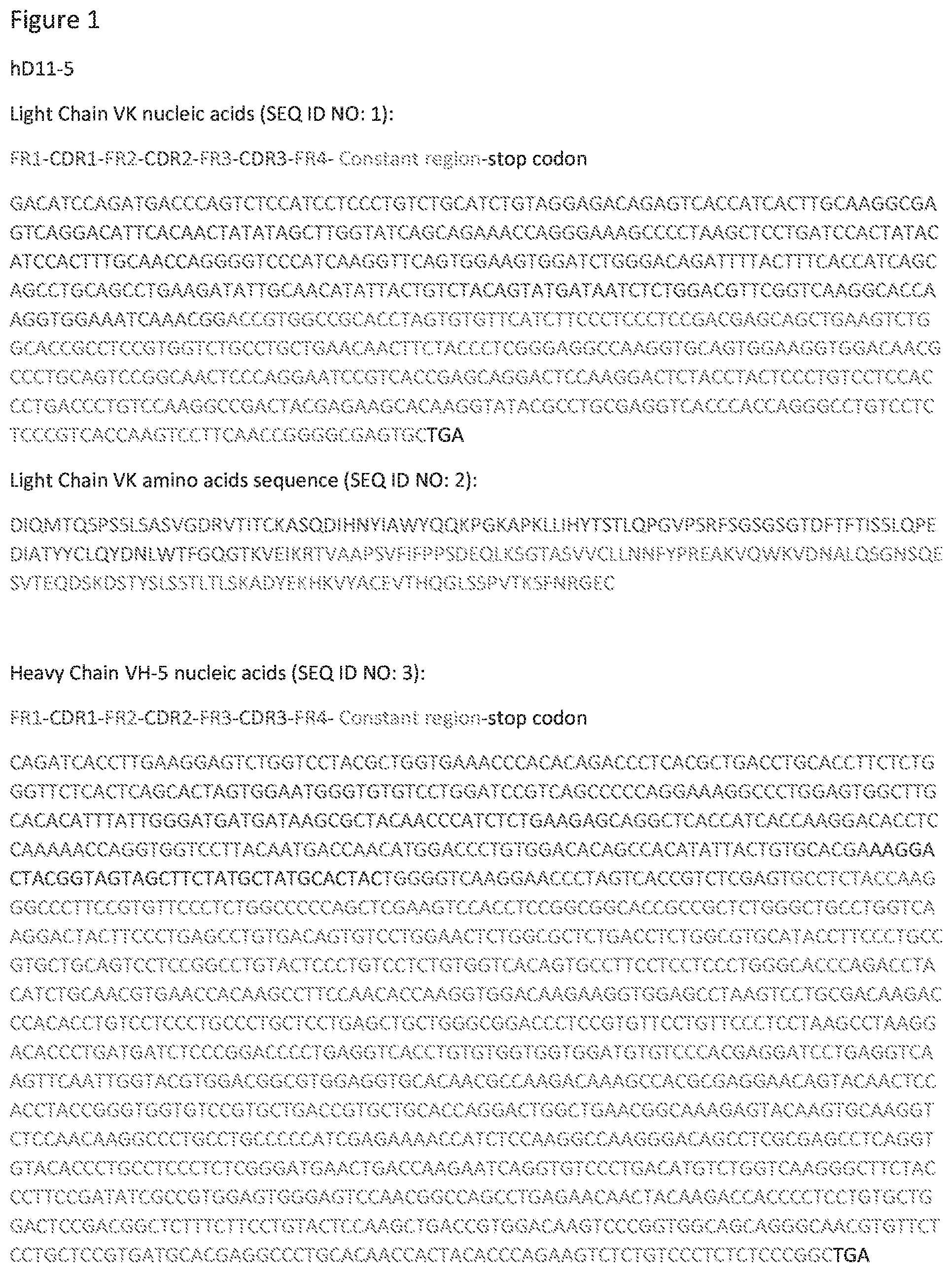
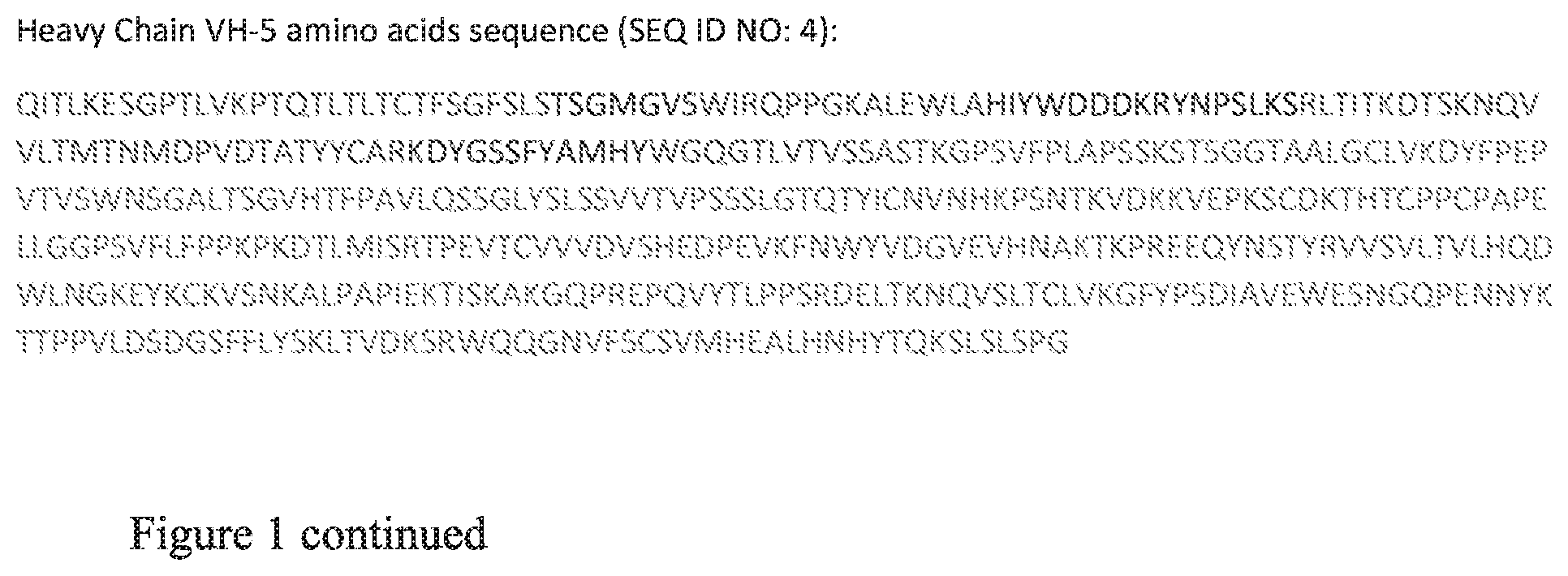
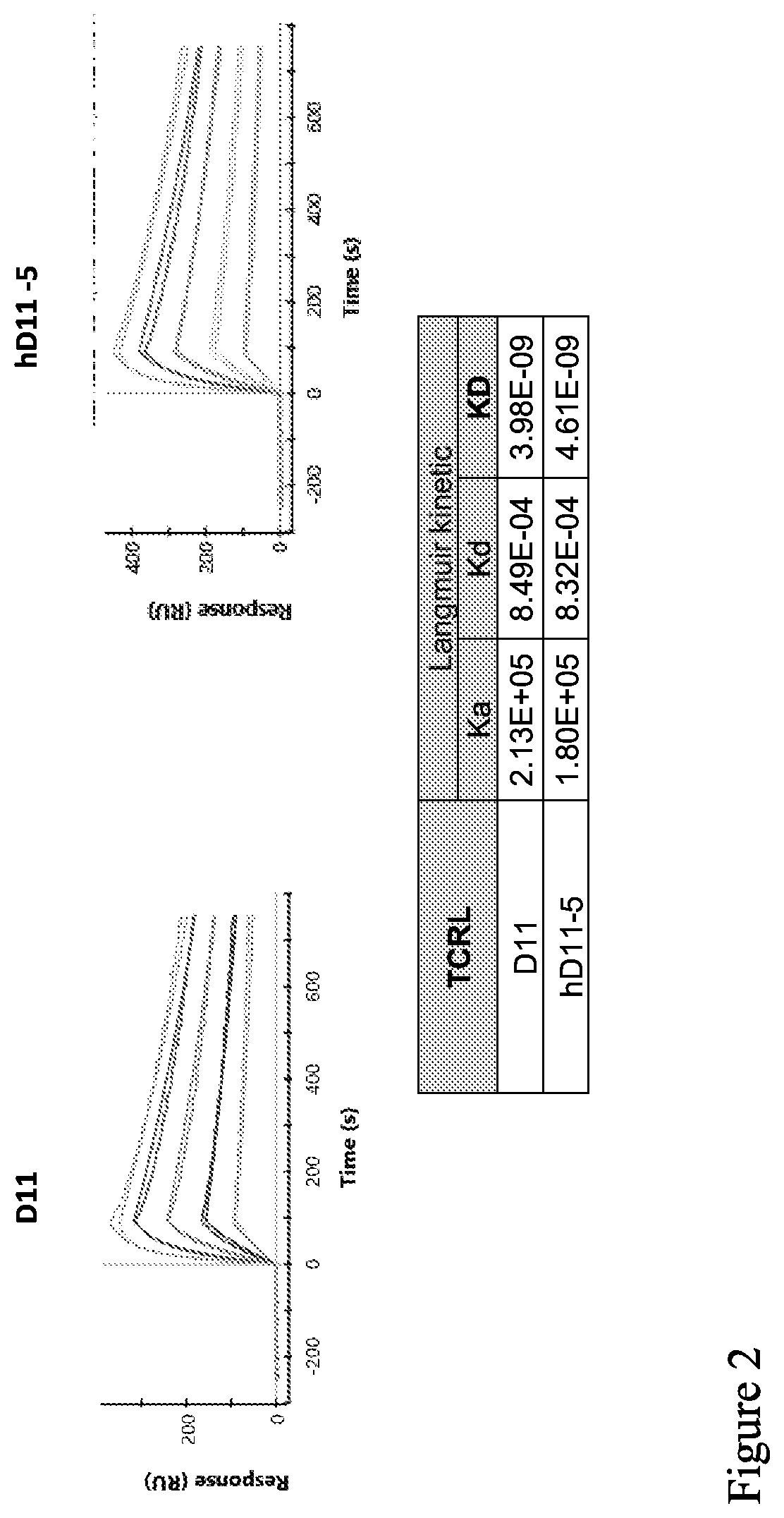


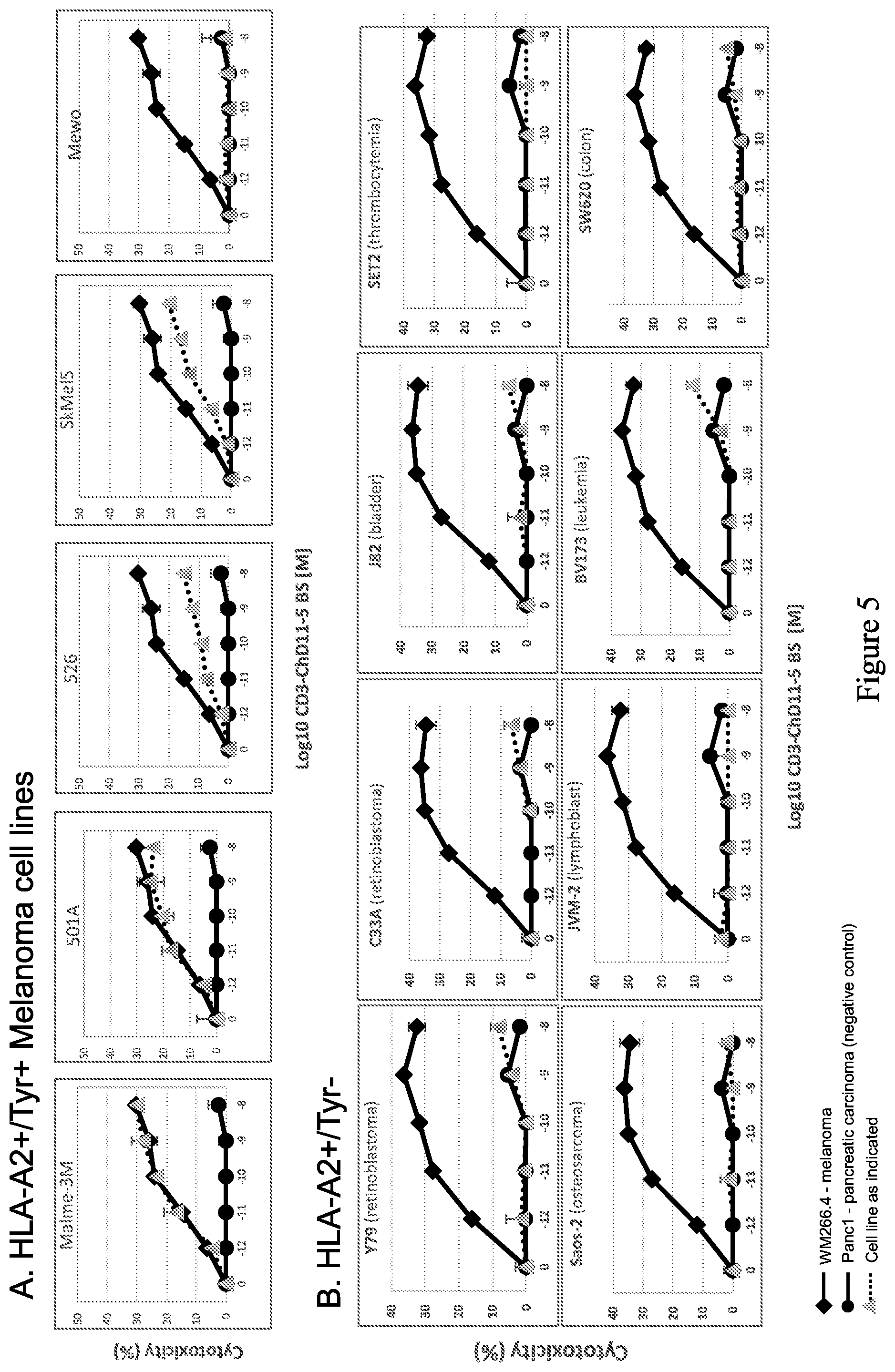
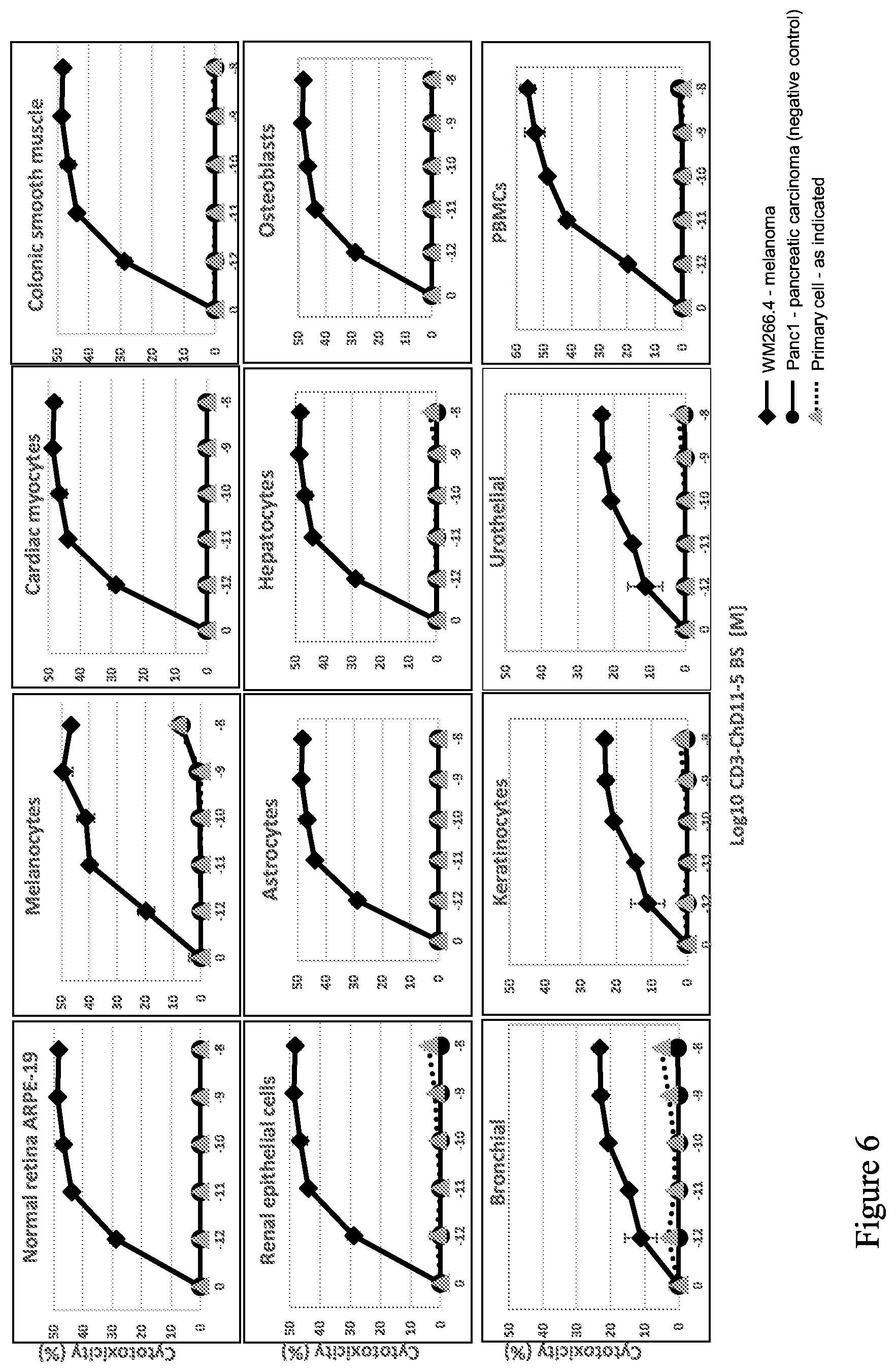

| United States Patent Application | 20200207858 |
| Kind Code | A1 |
| Jakobovits; Aya ; et al. | July 2, 2020 |
ANTIBODIES CAPABLE OF BINDING HLA-A2/TYRD IN AN HLA RESTRICTED MANNER AND USES THEREOF
Abstract
Antibodies capable of binding HLA-A2/Tyrosinase (TyrD) in an HLA restricted manner are provided. Specifically, the antibodies are capable of binding HLA-A2/TyrD369-377 in an HLA restricted manner. Further provided are complementary determining region (CDR) sequences of heavy chain and light chain of antibodies, and methods of using the antibodies for the treatment of cancer.
| Inventors: | Jakobovits; Aya; (Beverly Hills, CA) ; FOORD; Orit; (Foster City, CA) ; Satpayev; Daulet Kadyl; (Redwood City, CA) ; Peled Kamar; Mira; (Herzlia, IL) ; Denkberg; Galit; (Nofit, IL) ; Reiter; Yoram; (Haifa, IL) ; Beer; Ilan; (Haifa, IL) ; Sinik; Keren; (Ramat-Yishai, IL) ; Teboul (Elbaz); Yael; (Haifa, IL) ; Shperber (Sery); Yael; (Kfar-Vradim, IL) ; Erel Segal; Reut; (Haifa, IL) ; Oren; Ravit; (Haifa, IL) ; Alishekevitz; Dror Shmuel; (Kiryat-Tivon, IL) | ||||||||||
| Applicant: |
|
||||||||||
|---|---|---|---|---|---|---|---|---|---|---|---|
| Family ID: | 64658979 | ||||||||||
| Appl. No.: | 16/622892 | ||||||||||
| Filed: | June 14, 2017 | ||||||||||
| PCT Filed: | June 14, 2017 | ||||||||||
| PCT NO: | PCT/IB17/53539 | ||||||||||
| 371 Date: | December 13, 2019 |
| Current U.S. Class: | 1/1 |
| Current CPC Class: | C07K 2317/31 20130101; C07K 2317/622 20130101; C07K 16/2833 20130101; C07K 2317/32 20130101; A61P 35/00 20180101; C07K 2317/565 20130101; C07K 2317/92 20130101; A61P 9/00 20180101; C07K 2317/24 20130101; C07K 16/2809 20130101; C07K 16/40 20130101; C07K 2317/73 20130101; A61K 2039/505 20130101 |
| International Class: | C07K 16/28 20060101 C07K016/28; A61P 35/00 20060101 A61P035/00 |
Claims
1. An antibody comprising an antigen binding domain comprising CDR sequences which are N-C ordered: TABLE-US-00005 CDR1 Heavy Chain (HC) SEQ ID NO: 8 TSGMGVS CDR2 HC SEQ ID NO: 9 HIYWDDDKRYNPSLKS CDR3 HC SEQ ID NO: 10 KDYGSSFYAMHY CDR1 Light Chain (LC) SEQ ID NO: 5 KASQDIHNYIA CDR2 LC SEQ ID NO: 6 YTSTLQP CDR3 LC SEQ ID NO: 7 LQYDNLWT
wherein a variable region of said heavy chain of the antibody is as set forth in SEQ ID NO: 4 and said antibody is capable of binding HLA-A2/Tyr.sub.D369-377 in an HLA restricted manner.
2. An antibody comprising an antigen binding domain comprising CDR sequences which are N-C ordered: TABLE-US-00006 CDR1 Heavy Chain (HC) SEQ ID NO: 8 TSGMGVS CDR2 HC SEQ ID NO: 9 HIYWDDDKRYNPSLKS CDR3 HC SEQ ID NO: 10 KDYGSSFYAMHY CDR1 Light Chain (LC) SEQ ID NO: 5 KASQDIHNYIA CDR2 LC SEQ ID NO: 6 YTSTLQP CDR3 LC SEQ ID NO: 7 LQYDNLWT
wherein a variable region of said heavy chain of the antibody is as set forth in SEQ ID NO: 4, a variable region of said light chain of the antibody is as set forth in SEQ ID NO: 2 and said antibody is capable of binding HLA-A2/Tyr.sub.D369-377 in an HLA restricted manner.
3. The antibody of claim 1 or 2 is IgG.
4. The antibody of any one of claims 1 and 3 being a chimeric antibody.
5. The antibody of any one of claims 1, 2 and 4, being an antibody fragment.
6. The antibody of claim 5 selected from the group consisting of Fab, F(ab')2, Fv, scFv, dsFv and a single domain molecule.
7. The antibody of claim 1 or 3, wherein said heavy chain of the antibody is as set forth in SEQ ID NO: 21 or 27.
8. The antibody of any one of claims 1, 3-7, wherein said light chain of the antibody is as set forth in SEQ ID NO: 2, 19 or 25.
9. The antibody of any one of claims 1-8 comprising a therapeutic moiety.
10. The antibody of claim 9, wherein said therapeutic moiety is selected from the group consisting of a cytotoxic moiety, a toxic moiety, a cytokine moiety and a drug.
11. The antibody of claim 9, wherein said therapeutic moiety comprises a cell.
12. The antibody of claim 11, wherein said cell is selected from the group consisting of an .alpha..beta. T-cell, .gamma..delta. T-cell, NK, CIK, NKT, macrophage and a B cell.
13. The antibody of any one of claims 1-9 being a bispecific antibody.
14. The antibody of claim 13, wherein said bispecific antibody comprises an anti-CD3 or an anti-CD16.
15. The antibody of claim 14, wherein said anti-CD3 comprises an scFv.
16. The antibody of any one of claims 13-15, wherein a light chain of the antibody capable of binding HLA-A2/Tyr.sub.D369-377 in an HLA restricted manner is comprises SEQ ID NO: 2.
17. An isolated polynucleotide comprising a nucleic acid sequence encoding the antibody of any one of claims 1-16.
18. An expression vector comprising the polynucleotide of claim 17 operably linked to a cis-acting regulatory element.
19. The expression vector of claim 18 being a viral vector.
20. A cell comprising the polynucleotide of claim 17 or the expression vector of claim 18.
21. A pharmaceutical composition comprising the antibody of any of claims 1-16, the vector of claim 18 or the cell of claim 20.
22. A method of treating melanoma or glioblastoma, comprising administering to a subject in need thereof a therapeutically effective amount of the antibody of claim 1-16, the vector of claim 18 or the cell of claim 20, thereby treating the melanoma or glioblastoma.
23. The antibody of any one of claims 1-16, the vector of claim 18 or the cell of claim 20 in the treatment of melanoma or glioblastoma.
Description
FIELD AND BACKGROUND OF THE INVENTION
[0001] The present invention, in some embodiments thereof, relates to antibodies capable of binding HLA-A2/TyrD in an HLA restricted manner and uses thereof.
[0002] Tumor and virus-infected cells are recognised by CD8.sup.+ cytotoxic T cells that, in response, are activated to eliminate these cells. In order to be activated, the clonotypic T-cell receptor (TCR) needs to encounter a specific peptide antigen presented by the membrane surface major histocompatibility complex (MHC) molecule. Cells that have undergone malignant transformation or viral infection present peptides derived from tumour-associated antigens or viral proteins on their MHC class I molecules. Therefore, disease-specific MHC-peptide complexes are desirable targets for immunotherapeutic approaches. One such approach transforms the unique fine specificity but low intrinsic affinity of TCRs to MHC-peptide complexes into high-affinity soluble antibody molecules endowed with a TCR-like specificity towards tumour or viral epitopes. These antibodies, termed TCR-like antibodies, are being developed as a new class of immunotherapeutics that can target tumour and virus-infected cells and mediate their specific killing. In addition to their therapeutic capabilities, TCR-like antibodies are being developed as diagnostic reagents for cancer and infectious diseases, and serve as valuable research tools for studying MHC class I antigen presentation.
[0003] Melanomas are aggressive, frequently metastatic tumors derived from either melanocytes or melanocyte related nevus cells. Even when melanoma is apparently localized to the skin, up to 30% of patients develop systemic metastasis. Classic treatment modalities of melanoma include surgery, radiation and chemotherapy. In the past decade immunotherapy and gene therapy have emerged as new and promising methods for treating melanoma.
[0004] WO03/068201 discloses methods of producing TCR-like antibodies to tumor antigens including tyrosinase.
[0005] WO2008/120202 discloses TCR-like antibodies to HLA-Tyrosinase.sub.369-377 complex.
[0006] Additional background art includes:
SUMMARY
[0007] According to an aspect of some embodiments o
D00001

D00002

D00003

D00004

D00005

D00006

D00007

D00008

S00001
XML
uspto.report is an independent third-party trademark research tool that is not affiliated, endorsed, or sponsored by the United States Patent and Trademark Office (USPTO) or any other governmental organization. The information provided by uspto.report is based on publicly available data at the time of writing and is intended for informational purposes only.
While we strive to provide accurate and up-to-date information, we do not guarantee the accuracy, completeness, reliability, or suitability of the information displayed on this site. The use of this site is at your own risk. Any reliance you place on such information is therefore strictly at your own risk.
All official trademark data, including owner information, should be verified by visiting the official USPTO website at www.uspto.gov. This site is not intended to replace professional legal advice and should not be used as a substitute for consulting with a legal professional who is knowledgeable about trademark law.